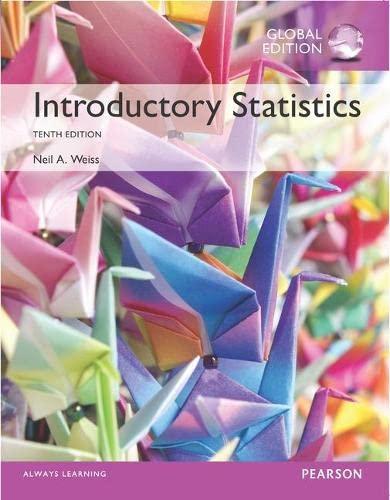Explain why the paired Wilcoxon signed-rank test is simply a Wilcoxon signed-rank test on the sample of
Question:
Explain why the paired Wilcoxon signed-rank test is simply a Wilcoxon signed-rank test on the sample of paired differences with null hypothesis H0: μd = 0.
Paired Sign Test. Recall that the paired Wilcoxon signed-rank test, which can be used to perform a hypothesis test to compare two population medians, requires that the paired-difference variable,
d, has a symmetric distribution. If that is not the case, the paired sign test can be used instead. Technically, like the paired Wilcoxon signed-rank test, use of the paired sign test requires that the paired-difference variable has a continuous distribution. In practice, however, that restriction is usually ignored.
The null hypothesis for a paired sign test is H0: ηd = 0, that is, the median of the population of paired differences is 0. If the null hypothesis is true, the probability is 0.5 that an observed paired difference exceeds 0. Therefore, in a simple random sample of size n, the number of paired differences, s, that exceed 0 has a binomial distribution with parameters n and 0.5.
To perform a paired sign test, first assign a “+” sign to each paired difference that exceeds 0 and then obtain the number of “+” signs, which we denote s0. The P-value for the hypothesis test can be found by applying Exercise 9.71 on page 409 and obtaining the required binomial probability.
Step by Step Answer:






